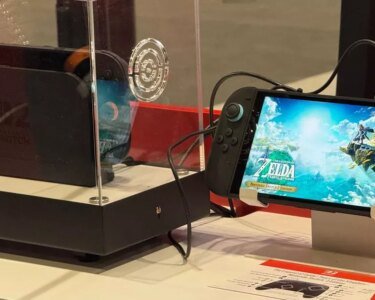As cold days and the diminished daylight of the winter months fall upon us, the desire to stay out on long runs (or leave the house in the first place) might also be diminished.
Having the right cold-weather running gear isn’t a total cure for the winter blues, but it sure makes it easier to exit your vehicle at the trailhead. With the right attitude and some fun and functional new accessories, you too can continue your year-round training and enjoy the benefits of breathing fresh air, no matter how cold or dark.
Best Winter Running Gear
Shop more running gear on sale for Black Friday
The Expert: I started road running in New Hampshire in college, taking my love of running from road to trail when I moved out west after graduating. Each year I test all sorts of running gear in all four seasons, using my field experience to pick the best options for a variety of athletes.
I’ve been writing about outdoor gear since 2013, and my reviews and other work have appeared in Backpacker Magazine, Outside, Travel + Leisure, the Strategist, Women’s Health, and more. In 2020, I co-founded Backpacking Routes, a website that connects backpackers with lxong-distance trails across the country.
What to Look for in Winter Running Gear
How We Tested Winter Running Gear
Caitlin Giddings initially curated this roundup of winter running gear in collaboration with Runner’s World Runner-in-Chief, Jeff Dengate. This update comes from careful consideration of Giddings’ and Dengate’s top picks, swapping out older models for updated versions and adding in new picks for some outdated items. Each accessory has been approved by our editors and team of testers based on its warmth, price, comfort, and style.
This is the go-to head warmer for the brave soul who runs in all conditions. Smartwool’s 100-percent merino is double-layered for extra warmth, but it also breathes, wicks moisture, and resists the odors that some man-made materials never shake, even after repeated washing. Plus, it’s soft. Roll the cuff up for a stylish touch or down low over your ears on the frostiest days. A few outliers complain that the weave on this year’s model is thinner than in the past, but most runners back it as their favorite.
This wide, snug headband stays secure around your ears and holds your hair out of your face without feeling so tight that it could induce a pressure headache. This is one of my favorite accessories for winter running, where a hat would be overkill but the extra protection is welcome.
This style of headband is the ideal layer to keep your head warm while also wicking sweat and venting excess heat, and it’s low-profile and lightweight enough to wear under a helmet on bike rides. And I’m a sucker for patterns—I believe the world needs more technical florals and Blackstrap always delivers.
Smartwool’s thin merino liners are great for chilly fall and early winter runs, but when the weather turns ugly, you might want something thicker with more protection from wind and rain. These merino gloves are available in five sizes and are just as lightweight and wooly-soft as the liners, but they retain more warmth so your fingers won’t go numb when the freezing rain starts.
A windproof panel on the back of the hand and fingers provides a bonus shield against the elements. When we tested winter running gloves in a freezer, the Smartwool Sport Fleece blew most running models out of the water in terms of holding onto heat—and performed even better in real-life testing out on the road. Just save the photo-taking for the end of your run—Smartwool claims these gloves are touch-screen-compatible, but our unlocked iPhones beg to differ.
Related: 12 Great Running Gloves You’re Sure to Love
The Down For It All is made of a water- and wind-resistant material that insulates you when direct sunlight and precipitation are fickle. lululemon’s vest runs small and its fit is snug, which is a plus if you want to store your phone and keys in its deep side pockets.
Our tester did just that and experienced no bounce on her runs—one of which was in 25-degree weather with snow flurries. “Even with a light long-sleeve underneath, it kept me warm and toasty,” she said. This is because of the goose down in the vest’s interior. It comes in seven colors, including dark adobe, night driver, and lavender dusk.
Test editor Amanda Furrer wore the Brighton Base Layer for a full week to test Tracksmith’s claim of the merino material being “almost completely impervious to odor.” It was an easy week packing her duffel in the morning, but her workouts were far from lazy. “In upper 30- to mid-50-degree temps, I did 6- to 10-mile runs,” she said. “I was surprised at how warm I felt when the weather app read ‘feels like 28’ and appreciated how my pits and back didn’t become saturated with sweat when the humidity was at 76 percent.”
The shirt didn’t stink up her duffel or compel coworkers to pinch their noses when she returned from a lunch run. The shirt also feels pajama-soft because its construction is seamless for chafe-free runs.
Related: The Best Shirts for Runners
These 28-inch-inseam tights are woven with another of Brooks’s proprietary fabrics, this one with slightly more polyester than in the company’s Carbonite glove blend. Material differences aside, it wicks away moisture and locks in warmth so you won’t freeze.
Both the men’s and women’s tights have side pockets with ample room for storage. Testers liked how comfy the tights were but wished there was more reflective detail. For a more visible option, we recommend Brooks’s Carbonite Tights ($130).
Related: Best Running Leggings
Whether you wear it like a headband, a face mask, a neck gaiter, or nearly any other imaginable way you can wrap it around your head, a Buff is one of the most versatile pieces of gear you can own. The 360-degree reflectivity on this one keeps you visible on pre-dawn jogs. And if you get hot, it’s super easy to pull off and wrap around a wrist.
As fall fades into winter, you’ll likely do more and more of your mileage before the sun comes up or after it sets. Having a dependable headlamp is crucial for seeing—and being seen—on those dark runs. The USB-chargeable NiteCore regularly holds up to (and surpasses) the competition in weight, lumens, light options, and battery life.
This rechargeable headlamp has three modes (flood, spotlight, and red light) and a maximum output of 520 lumens— more than enough to see the road or trail. It will last six hours on 400 lumens and an impressive eight hours on 200 lumens. All of this is wrapped up in a bounce-free package barely weighing over 2.5 ounces for significantly less money than you’ll pay with other major brands.
The standard Peregrine has always been an excellent shoe for trail running due to its wide platform, stellar traction, and smooth ride—plus a Pwrrun+ midsole that strikes a nice balance between supportive cushioning and low-profile ground connection. This ST model, short for “soft terrain,” shares all those traits and adds a sloppy-weather-friendly component that includes an outsole with longer lugs for biting into snow and ice, and wider gaps between those 1.5mm lugs for shedding mud and slush.
A rock plate at the front of the shoe shields your foot as it bites down into crunchy ice, while overlays on the durable, abrasion-resistant upper prevent cold water from seeping in. Our testers loved this shoe. Said one: “The Peregrine was exceptional across the board—wonderfully responsive and capable across deep mud and loose gravel to snow, with an amazing fit that needed none of my usual lacing tricks.”
Keeping your water from freezing is a necessary component of long runs on the coldest days, and this handheld bottle-carrier combo from Camelbak allows you to bring your insulated water bottle without the hassle of a vest or the fatigue of carrying a bottle on its own.
This carrier comes with Camelbak’s Podium Chill insulated 21-ounce water bottle in an ergonomic carrier that secures around the back of your hand, and the bottle fits well in most runners’ palms. The secure carrier has reflective striping for visibility, a zippered pocket for your phone and small essentials, and an adjustable strap to tension the carrier over your hand.
While “sunglasses” might not be the first gear item to come to mind on cold, overcast days, UV rays are present year-round and can cause permanent damage to your eyes. Tifosi has been making a wide range of sport-specific eyewear for a fraction of the price of more expensive brands, and these sunglasses have served me well in everything from bright sunlight to cloudy days of winter running.
The Clarion Blue, Crystal Clear, and Clarion Red Fototec have photochromic polycarbonate lenses that start with nearly clear tints for overcast days, then darken as the weather brightens. The Rail XC comes in several colors and options, so be sure to choose the Fototec if you’re looking for light-adjusting lenses.
Looking for a sock to take you from the chilly fall days to colder mid-winter runs? Smartwool combines its technology honed over years of building socks for hiking, skiing, and all-weather running to this targeted pair of cold-weather running socks that don’t feel like overkill on moderate days, but will still feel comfortable on mid-winter runs.
These have a form-fitting, no-slip design that supports your foot without too much tension around the arch, as well as mesh sections for breathability and venting. If you need a thicker sock for the coldest runs, look elsewhere, but for most moderate-to-high output runs through the season, this versatile sock will do the trick.
Expert Maggie Slepian Shares Ways To Warm Up to Winter Running. Read Her Tips on Shoes to Wear and When to Hit the Treadmill Instead.
Maggie Slepian is a full-time freelance writer in the outdoor industry and has tested gear professionally for almost ten years—she is an avid backpacker, trail runner, bikepacker, and horseback rider and has thru-hiked thousands of miles on the Appalachian, Colorado, and Ouachita trails, along with backcountry travel on terrain including coastal trails, the desert, and high alpine peaks. Maggie has written for New York Magazine, Huffington Post, REI, and Outside. She is a columnist with Backpacker Magazine and is the co-founder of BackpackingRoutes.com. Contact her at MaggieSlepian.com.











